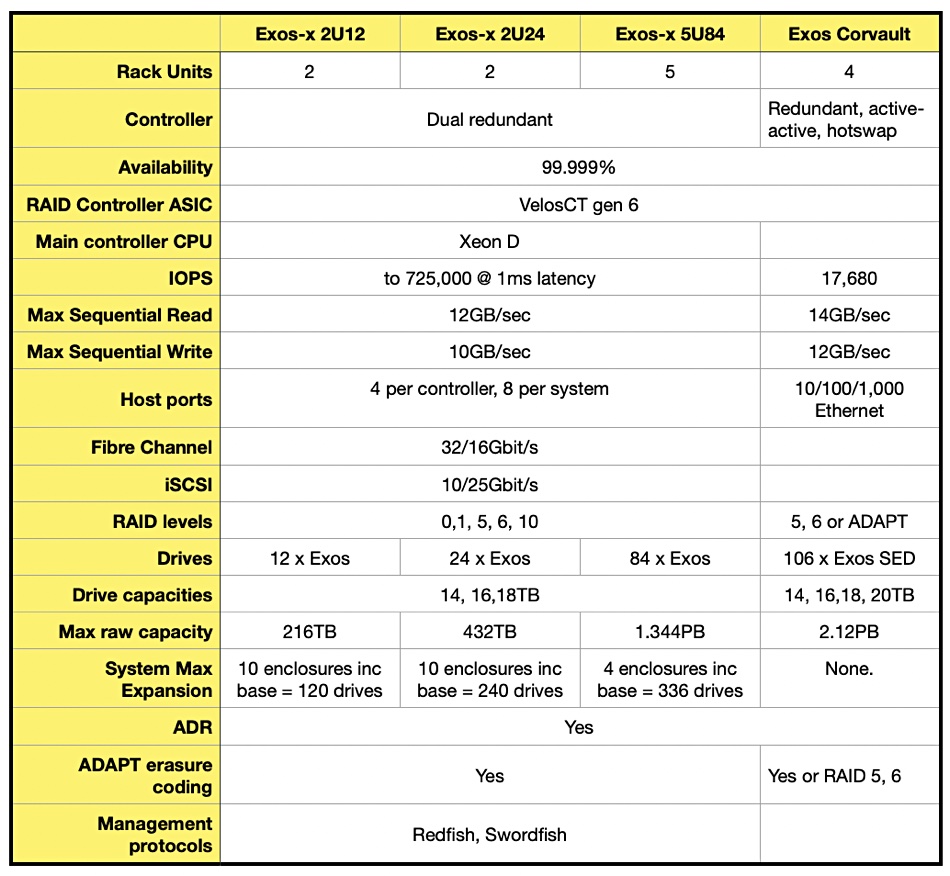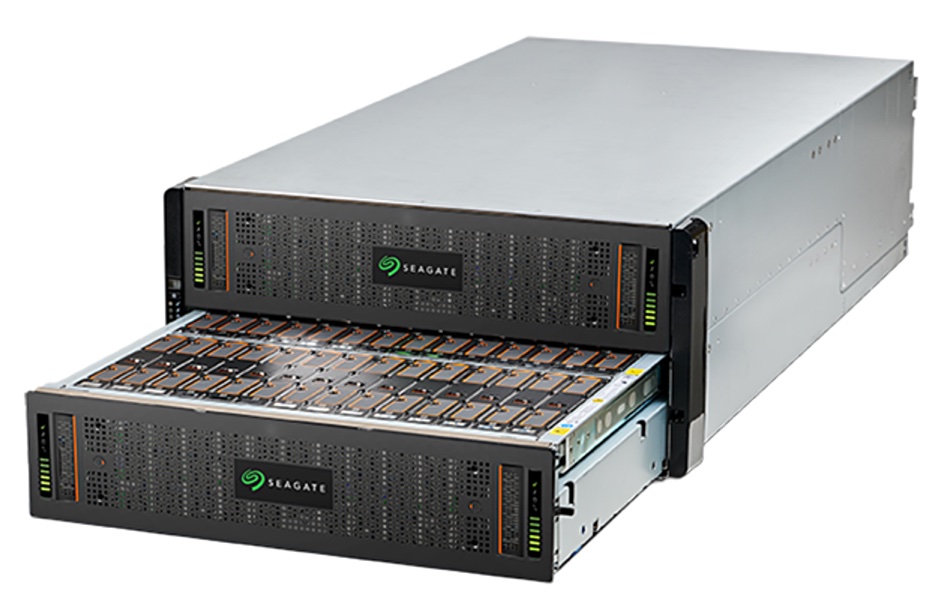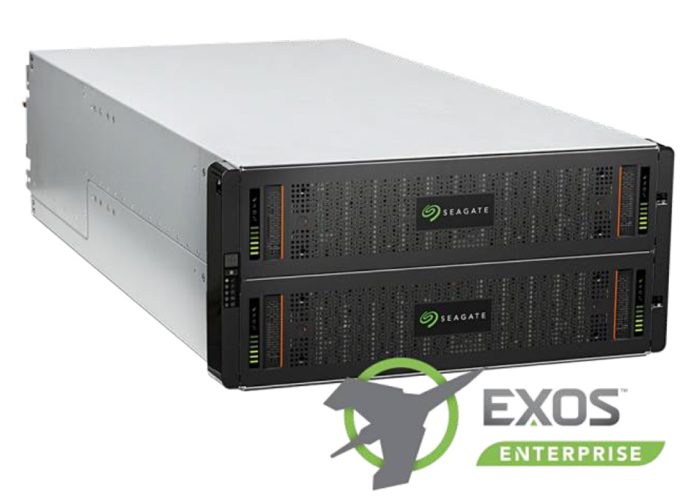Seagate has uprated its Exos Application Platform (AP) arrays to new Exos X models with a VelosCT ASIC RAID controller boosting performance.
The drive maker started building Exos AP block access storage drive arrays in 2015 with the $694 million acquisition of Dot Hill, an OEM supplier of drive array chassis. The portfolio includes the Exos drives and Application Platform (AP) arrays or storage servers, which Seagate describes as compute and convergence platforms. The AP moniker has now gone away in favor of Exos X.
Ken Claffey, SVP systems at Seagate, said: “Featuring the new controller engineered and built by Seagate, the new Exos X systems can achieve a new level of RAID array availability, reliability, and performance for better efficiency while significantly reducing administrative burden. Exos X systems will help our data center customers form a future-proof data management strategy.”

There are three Exos X products, defined by their rack shelf size and drive bay count: 2U12 with a 2U chassis and 12 x 3.5-inch bays; 2U24 with 24 drive slots; and 5U84 with 84 slots in its 5U chassis. There was once a 4U100 box but we now have the Exos Corvault 4U box with 106 drive slots. This is just a bunch of disks (JBOD) in a box and its streaming IO performance is 14GB/sec reading and 12GB/sec writing, which exceeds the Exos X’s 12GB/sec read and 10GB/sec write speeds.
However, the Exos X is rated by Seagate at up to 725,000 IOPS (at 1ms latency), which is much faster than Corvault’s 17,680 IOPS.
The prior AP 2U12 product delivered 7GB/sec reads and 5.5GB/sec writes.
There can be an additional nine expansion chassis to the base unit in the 2U12 and 2U24 models, but only three expansion units added to the base 5U84 system.
In December, the Exos AP RAID controllers were AP-BV-1 units with the main compute power coming from gen 2 AMD EPYC processors. The Exos X products have a Seagate-designed gen 6 VelosCT ASIC providing RAID functionality and working alongside Xeon D CPUs. Supported RAID levels are 0, 1, 5, 6 and 10.

The new systems inherit Seagate’s ADAPT (Autonomic Distributed Allocation Protection Technology) erasure coding technology, which distributes data across every drive and enables faster drive rebuilds as all the existing drives contribute. The VelosCT chip optimizes all drive actuators in parallel, which helps speed both general and failed drive rebuild performance.
Exos X also has Seagate’s ADR (Automatic Drive Regeneration) functionality, as used with Corvault products. If a drive read/write head fails, ADR can bypass (depopulate) the failed head, losing a platter of capacity, while the remaining heads and platters operate normally. Seagate says ADR can continuously monitor, diagnose, and automatically rebuild the drives in-place without the need for a manual swap. This allows datacenters to reduce physical drive handling, human intervention, and computer e-waste, says Seagate.
The Exos X products support the Redfish and Swordfish open standard management protocols.
Exos arrays are available through qualified Seagate distributors and resold through software-defined storage supplier StorONE.








